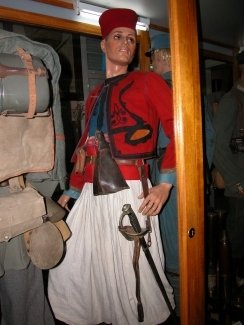Telephone: +33 (0)3-21451580
Website: not available
Shop: available
Restaurant/refreshments: restaurant
Size of the museum/site: medium
Year of visit: 2003
Overall rating:

Description: Central theme of this museum is without doubt: 'the trench', one of the most characteristic features of the First World War. In this part of France some of the heaviest battles in trench-warfare took place. Although the museum looks rather small from the outside it's definitely surprising to see what's inside.
The first part of the museum offers a pretty interesting exhibition of, for the larger part, (rare) uniforms, but also smaller items like knives, guns and all kinds of 'personal belongings'. The most interesting and impressive part of the museum however, are the splendid dioramas, which are clearly put up with great care for detail. They show different aspects of life in the trenches: soldiers during their pastime, planning yet another attack at the headquarters or the stressful circumstances in a 'trench-hospital'. Every scene is given an extra dimension by 'real' conversation, both in French and English. After almost ninety years the battlefield outside of the museum perhaps isn't in its most original state, but nevertheless it still is worthwhile having a look around it. A last point worth mentioning is the pretty well equipped shop.
To go short, this definitely is a museum not to be missed when you're in the area. If you still want to know more about the Great War after your visit, you could check out the Musée militaire de la Targette, situated a few kilometres down south along the D937.







